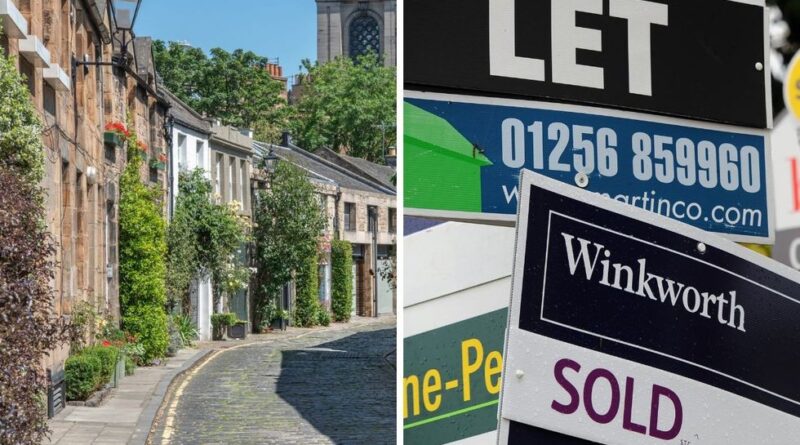The UK regions where house prices have soared the most as values rise in all but one area – full list
The UK housing market has shown resilience, with average house prices rising by 2.2 per cent in the year to July 2024, according to Office of National Statistics data released today.
This is slightly down from June, where a 2.7 per cent annual inflation rate was recorded. The average UK house price now stands at £290,000, showing a £6,000 increase from the previous year.
The regional percentages vary greatly, with Northern Ireland and Scotland leading the growth. Northern Ireland saw a robust 6.4 per cent increase in the year to Q2 2024, bringing the average price to £185,000. Scotland followed closely with a six per cent rise, pushing the average price to £199,000.
England experienced more modest growth, with prices climbing to £306,000, a 1.6 per cent increase. Wales also saw positive movement, with prices up two per cent to £218,000.
The North East emerged as the English region with the highest annual house price inflation, recording a 3.8 per cent increase to £164,555. Yorkshire and The Humber followed closely with a 3.7 per cent rise to £214,918.
In contrast, London was the only region to see a decrease, with prices falling by 0.4 per cent to £520,747.
Average property price (annual change)
Northern Ireland (Quarter 2 – 2024) £185,025 – up 6.4%
Scotland £199,398 – up 6%
North East £164,555 – up 3.8%
Yorkshire and The Humber £214,918 – 3.7%
North West £219,887 – 2.8%
East Midlands £248,817 – up 2.5%
West Midlands Region £253,707 – 2.2%
Wales £218,184 – up 2%
South West £320,415 – up 1%
South East £381,188 – up 0.5%
East of England £341,160 – up 0.3%
London £520,747 – down 0.4%
These figures show the diverse nature of the UK property market, with significant regional disparities in price growth.
The Bank of England’s Money and Credit July 2024 release reported a significant increase in mortgage approvals for house purchases, which may have impacted house prices. In July, approvals rose to 62,000, the highest level since September 2022 and up from 60,600 in June.
This surge in mortgage approvals is seen as a positive indicator for future borrowing and market stability.
The uptick in approvals aligns with data from HMRC’s UK Property Transactions Statistics, which showed a 6.7 per cent year-on-year increase in residential property transactions valued at £40,000 or greater in July 2024.
LATEST DEVELOPMENTS
Seaside town crowned England’s best coastal spot for living thanks to affordabilityBritons told which two rooms to focus on to boost their property’s valueSeven interior design mistakes to avoid that ‘drive down property value’
However, it’s worth noting that transactions decreased by 0.6 per cent between June and July 2024 on a seasonally adjusted basis.
These figures suggest a cautiously optimistic outlook for the British housing market, with steady demand despite economic uncertainties.
The Royal Institution of Chartered Surveyors’ July 2024 UK Residential Market Survey reported stable market conditions. New buyer enquiries and agreed sales held steady, whilst new listings showed a broadly flat trend.
The Bank of England’s Agents’ summary of business conditions for Q2 2024 echoed this stability, noting consistent transaction numbers and demand levels.
Regional variations persisted, with most English regions exhibiting flat or negative price trends. However, Scotland and Northern Ireland continued to see upward movements in house prices.

